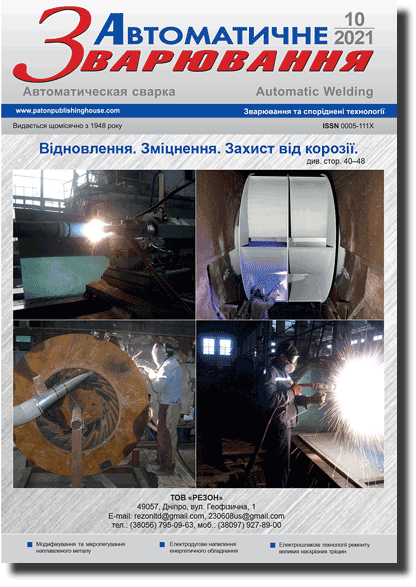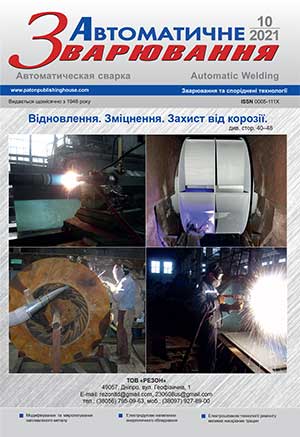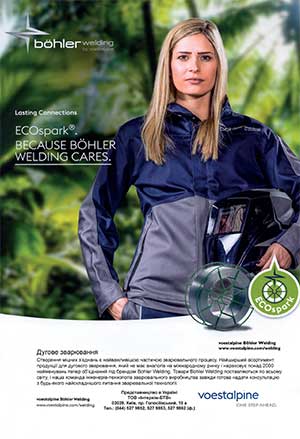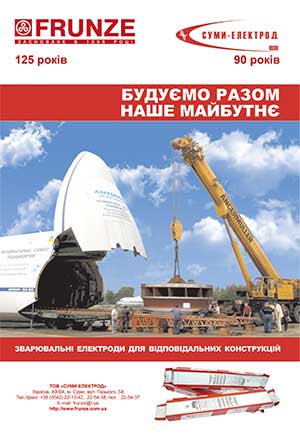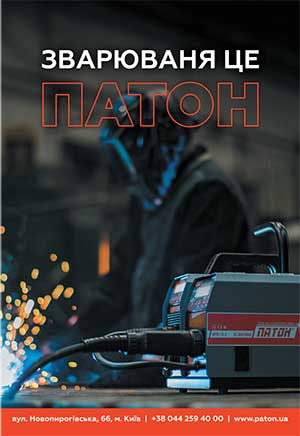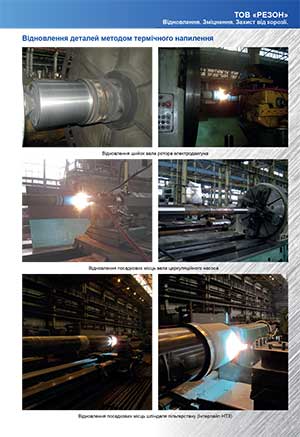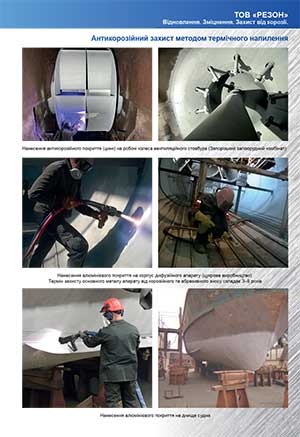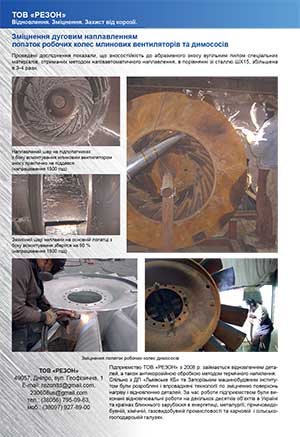| 2021 №10 (03) |
DOI of Article 10.37434/as2021.10.04 |
2021 №10 (05) |
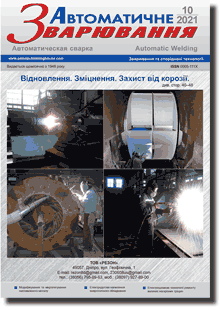
"Avtomatychne Zvaryuvannya" (Automatic Welding), #10, 2021, pp. 29-34
Mathematical modeling of melting temperature range and phase composition of multicomponent nickel alloys
S.V. Maskimova, V.V. Voronov, P.V. Kovalcuk
E.O. Paton Electric Welding Institute of the NAS of Ukraine. 11 Kazymyr Malevych Str., 03150, Kyiv, Ukraine. E-mail: office@paton.kiev.ua
Modern brazing fi ller metals for brazing high-temperature nickel alloys are complex alloys, where the components should provide the required level of strength, high-temperature resistance, high-temperature corrosion resistance and other service properties of brazed joints. However, establishing the optimum composition to obtain the desired set of properties is a non-trivial task, requiring considerable investment of time and money. The work is a study of applicability of the method of mathematical modeling of thermodynamic processes (CALPHAD) during development of multicomponent brazing fi ller metals for brazing high-temperature nickel alloys. During performance of investigations, using CALPHAD computational procedure, melting temperature ranges were determined for a number of alloys of Ni–Cr–Co–Al–(Ме)–Ta system. Calculated data were obtained on the infl uence of adhesion-active elements of group IV and V of the periodic table on liquidus temperature and phase composition of the basic nickel alloy. In particular, their impact on the quantity and thermal stability of γ'-phase and σ-phase was determined. Thermodynamic calculated data, obtained with application of mathematical modeling method, were used during development and investigation of a number of promising brazing fi ller metals for brazing high-temperature nickel alloys, including singlecrystal high-temperature nickel alloy ZhS-32VI. 21 Ref., 8 Fig.
Keywords: brazing fi ller alloy, brazing, high-temperature nickel alloys, mathematical modeling (CALPHAD), adhesion-active components, titanium, niobium, tantalum, γ'-phase, σ-phase
Received: 7.07.2021
References
1. Kuznetsov, V.P., Lesnikov, V.P., Popov, N.A. (2016) Structure and properties of monocrystalline high-temperature nickel alloys. Ekaterinburg, Izd-vo Ural. Un-ta [in Russian].2. Kablov, E.N., Petrushin, N.V., Svetslov, I.L., Demonis, I.V. (2007) Casting heat-resistant nickel alloys for perspective aircraft GTE. Tekhnologiya Lyogkikh Splavov, 2, 6-16 [in Russian].
3. Zhou, Shihuai, Wang, Yougan, Zhu, J. et al. (2004). Computational tools for designing Ni-Base superalloys. In: Proc. of the Int. Symposium on Superalloys. https://doi.org/10.7449/2004/Superalloys_2004_969_975
4. Kablov, E.N. (2005) Heat-resistant structural materials. Litejnoe Proizvodstvo. 7. URL: https://viam.ru/sites/default/files/ scipub/2005/2005-204274.pdf
5. Gaiduk, S.V., Kononov, V.V., Kurenkova, V.V. (2017) Application of integrated calculation-analytic method for multi- criterion optimizing of compositions of casting heat-resistant nickel alloys. Suchasna Elektrometal. 126, 1, 44-51. [in Ukrainian]. https://doi.org/10.15407/sem2017.01.08
6. Saunders, N., Fahrmann, M., Small, C.J. (2000) The application of CALPHAD calculations to Ni-based superalloys. Superalloys, 803-811. https://doi.org/10.7449/2000/Superalloys_2000_803_811
7. Markl, M., Müller, A., Ritter ,N. et al. (2018) Development of single-crystal Ni-Base superalloys based on multi-criteria numerical optimization and efficient use of refractory elements. Metall. Mater. Trans. A, 49, 4134-4145. https://doi.org/10.1007/s11661-018-4759-0
8. Kablov, E.N. (2001) Cast blades of gas turbine engines (alloys, technology, coatings). Moscow, MISiS [in Russian].
9. Petrushin, N.V., Chabina, E.B., Nazarkin, R.M. (2012) Development of heat-resistant intermetallic alloys based on γ′- phase with high melting temperature. Pt 1. Metallovedenie i Termicheskaya Obrabotka Metallov, 2, 32-38 [in Russian]. https://doi.org/10.1007/s11041-012-9458-7
10. Petrushin, N.V., Chabina, E.B., Nazarkin, R.M. (2012) Development of heat-resistant intermetallic alloys based on γ′-phase with high melting temperature. Pt 2. Ibid., 3, 20-23 [in Russian]. https://doi.org/10.1007/s11041-012-9466-7
11. Huang, W., Chang, Y.A. (1999) A thermodynamic description of the Cr-Ni-Re-Al system. Mater. Sci. and Eng. A, 259, 110-119. https://doi.org/10.1016/S0921-5093(98)00875-2
12. Perrut, M. (2015) Thermodynamic Modeling by the CALPHAD method and its applications to innovative materials. Aerospace Lab., 9, 1-11. DOI : 10.1276212015.AL09.10
13. Saunders, N. (1996) Phase diagram calculations for Ni-based superalloys. Superalloys, 101-110. 14. Lukas, H.L., Fries, S.G., Sundman, B. (2007) Computational thermodynamics: The Calphad method. Cambridge University Press. https://doi.org/10.7449/1996/Superalloys_1996_101_110
15. https://www.sentesoftware.co.uk/jmatpro
16. Saunders, N., Guo, Z., Li, X. et al. (2003) Using JMatPro to model materials properties and behavior. JOM, 55(12), 60-65. https://doi.org/10.1007/s11837-003-0013-2
17. Sidorov, A. (2015) JMatPro - program package for modeling of properties of steels and alloys. CAD and graphics. Sovremennye Tekhnologii - v Promyshlennost, 3, 2-4 [inRussian].
18. Tapia, A.S. (2006) Computational Design of Nickel Based Superalloys for Industrial Gas Turbine Components. University of Florida.
19. Schillé, J.-P., Guo, Z., Saunders, N., Miodownik, A.P. (2011) Modeling phase transformations and material properties critical to processing simulation of steels. Materials and Manufacturing Processes, 26(1), 137-143. https://doi.org/10.1080/10426910903153059
20. Petrushin, N.V., Ospennikova, O.G., Visik, E.M. et al. (2012) Heat-resistant alloys of low density. Litejnoe Proizvodstvo, 6 [in Russian]. URL: https://viam.ru/sites/default/files/scipub/2011/2011-205933.pdf
21. Morozova, G.I. (1992) Phenomenon of γ′-phase in heat-resistant nickel alloys [in Russian]. URL: https://viam.ru/sites/files/scipub/ 1992-201097.pdf
Advertising in this issue:
The cost of subscription/purchase order journals or individual articles
| Journal/Currency | Annual Set | 1 issue printed |
1 issue |
one article |
| TPWJ/USD | 384 $ | 32 $ | 26 $ | 13 $ |
| TPWJ/EUR | 348 € | 29 € | 24 € | 12 € |
| TPWJ/UAH | 7200 UAH | 600 UAH | 600 UAH | 280 UAH |
| AS/UAH | 1800 UAH | 300 UAH | 300 UAH | 150 UAH |
| AS/USD | 192 $ | 32 $ | 26 $ | 13 $ |
| AS/EUR | 180 € | 30 € | 25 € | 12 € |
| SEM/UAH | 1200 UAH | 300 UAH | 300 UAH | 150 UAH |
| SEM/USD | 128 $ | 32 $ | 26 $ | 13 $ |
| SEM/EUR | 120 € | 30 € | 25 € | 12 € |
| TDNK/UAH | 1200 UAH | 300 UAH | 300 UAH | 150 UAH |
| TDNK/USD | 128 $ | 32 $ | 26 $ | 13 $ |
| TDNK/EUR | 120 € | 30 € | 25 € | 15 € |
AS = «Automatic Welding» - 6 issues per year;
TPWJ = «PATON WELDING JOURNAL» - 12 issues per year;
SEM = «Electrometallurgy Today» - 4 issues per year;
TDNK = «Technical Diagnostics and Non-Destructive Testing» - 4 issues per year.





